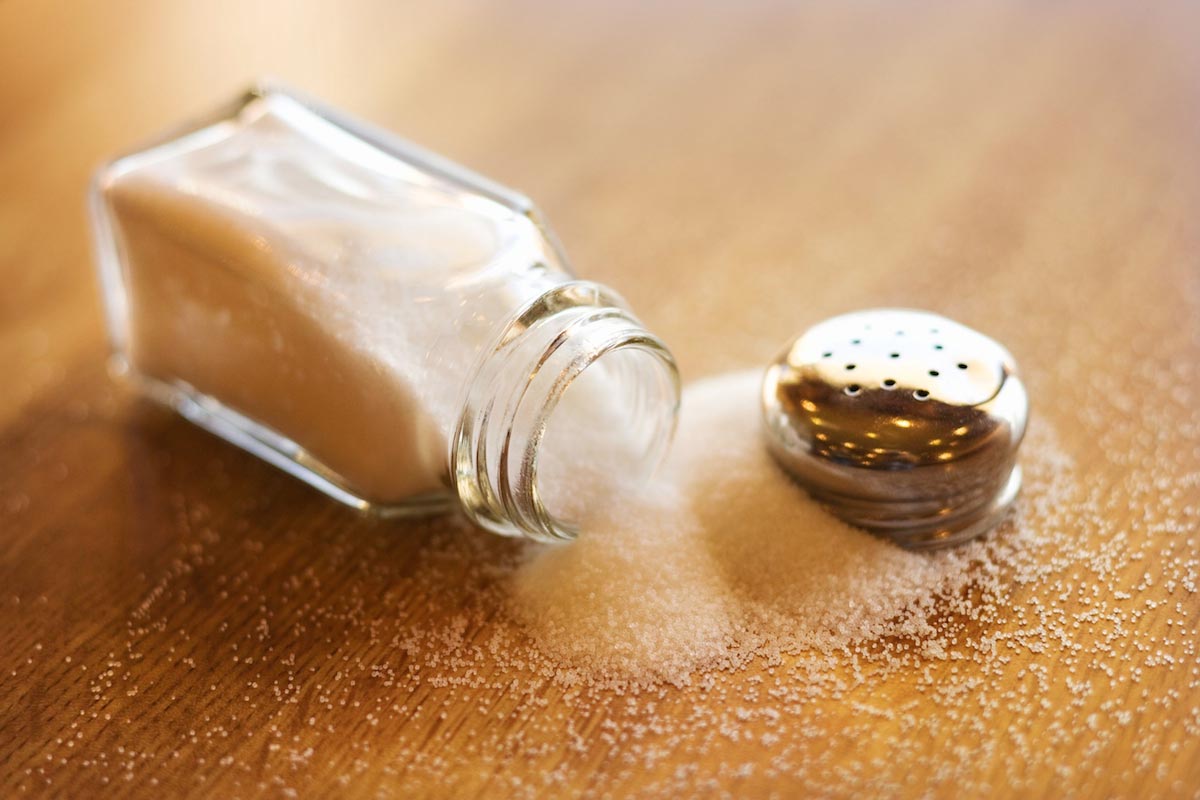
People consume more than 1,000 microplastics annually through table salt, according to a study.
Researchers from Andalas University (UNAND) in Indonesia's West Sumatra province noted this finding in a paper published in the Global Journal of Environmental Science and Management (GJESM). The study authors looked at 21 table salt brands purchased in groceries at the city of Padang in West Sumatra and the city of Jambi in the eponymous province. According to the National Pulse, the study did not name the brands tested.
The study authors took 50 grams of salt from the 21 brands, and used 30 percent hydrogen peroxide and 0.45-micrometer pore filters to remove organic impurities. Once filtered, they used a stereomicroscope to detected the abundance, color, shapes and sizes of microplastics. The researchers also used a Fourier-transform infrared (FTIR) spectrometer to identify the polymer type of the microplastics obtained.
The UNAND researchers detected significant amounts of microplastics in all 21 salt samples, ranging from 33 to 313 particles per kilogram. Nearly 68 percent of the microplastics were fragments, almost 24 percent were fibers, a little over six percent were films and roughly three percent were pellets.
They also managed to identify the different polymer types the microplastics were made of. These include polyethylene (commonly used in synthetic resins) and polyester, which is used in man-made fiber materials. Other polymers detected include polyethylene terephthalate (used in clothing fibers and plastic food and drink containers) and polypropylene (used in heat-resistant plastics).
The study attributed this microplastic contamination of salt to two reasons – inadequate and unhygienic salt production, and the use of contaminated seawater as raw material. According to the Pulse, the paper is of relevance for countries that receive much of Indonesia's salt exports such as the Czech Republic, Singapore and the United States. (Related: Microplastic pollution is changing ocean ecosystems.)
Other studies attest to microplastics in salt
The Pulse continued: "Consumption of microplastics has been linked to cancer, heart disease, dementia and fertility problems," adding that the four polymers the UNAND researchers detected "have potential implications for human health."
Other studies have yielded similar findings of microplastics in table salt brands.
One study by Iranian researchers published in Toxicology Reports looked at 40 table salt samples with different brands available in the Iranian market. The salt products – which included sea salt, rock salt and non-standard salt – were first sieved, filtered and observed. They were then scanned using FTIR spectrometry, Micro-Raman and scanning electron microscope techniques to determine the microplastic content.
The researchers from Iran found that all the salt samples tested were contaminated with microplastics. They also noted that this finding was similar to other papers from China, India, Italy, Korea, Lebanon, Thailand and Turkey. "Microplastics are a threat to human health due to the absorption and transmission of dangerous pollutants and their inherent toxicity," the study authors warned.
Another study, this time by researchers from Korea, found microplastics in 39 salt brands produced in different areas. Twenty-eight sea salt brands from 16 countries/regions on six continents were included in the analysis.
The paper published in Environmental Science & Technology back in October 2018 "is based on the hypothesis that commercial sea salts can act as an indicator of microplastic pollution in the surrounding environment, unless the microplastics are filtered out during the manufacturing process." It ultimately identified Asia as a hotspot of global plastic pollution.
Visit Microplastics.news for more similar stories.
Watch this video about microplastics being detected in 90 percent of table salt.
This video is from the Daily Videos channel on Brighteon.com.
More related stories:
Food storage tips: How to protect your food supply from bugs and pests.
How to stockpile foods with a long shelf life.
Microplastic pollution is the REAL threat to our oceans, warn scientists.
Sources include:
Please contact us for more information.













